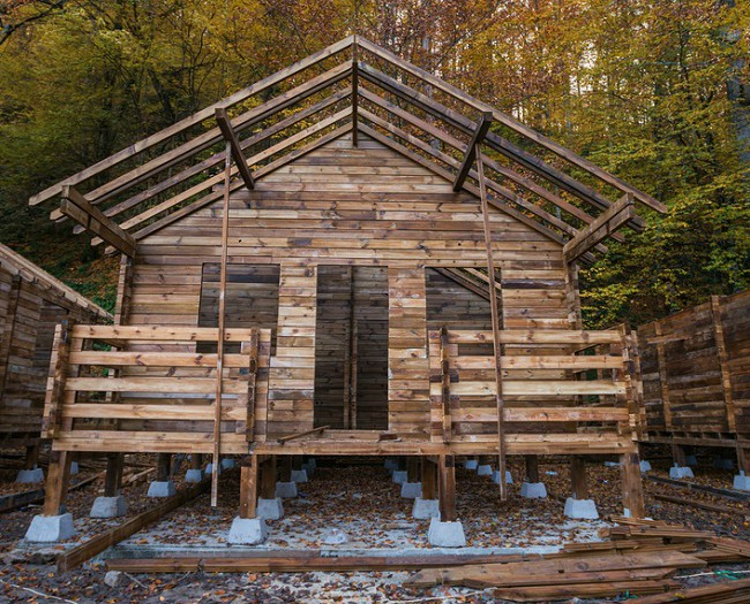The idea of restumping your house might feel a bit intimidating. After all, the stability and durability of your house depends on it. But it does not always have to be a major nightmare. The most important thing is to keep calm and understand a few things about restumping before proceeding further with it. Read on to know more about restumping before calling a contractor. Let’s get started!
Is restumping necessary for your house?
In order to answer the above question, you will have to answer a couple of other questions:
- Do your plaster walls have cracks?
- Is the floor a bit uneven?
- Do the windows and doors stick?
- Does the glassware start clink on the shelf each time someone walks by?
If the answer to three of the above questions is yes, it is high time for you to call the experts.
Unless the property is made on concrete slabs, most properties require restumping at a certain stage. The older properties made on timber stumps can last from fifteen to fifty years, based on a number of factors.
If you are thinking of major renovations, make sure that the existing stumps are ready to take the blow. If you have any doubt, restumping has to be made a part of the renovation work. It will help you save both headaches and money on a long-term basis.
What is meant by restumping?
Restumping or reblocking is all about jacking up your house by removing the present wooden stumps and getting them replaced. The floor levels have to be reset while restumping. There is a high possibility that these movements will lead to damaged tiles, cracked plaster, and warped doorframes. Nowadays, the replacement stumps are typically concrete which makes them last longer than the wooden stumps.
Moreover, a house might be partially damaged if just a few areas need restumping. However, if there is visible decay in half of the stumps, there is a high chance that the others are going to give away as well, even though they might look okay now. The experts would advise you to replace every stump at one go for best results.
Complete or partial restumping: Which one is needed?
Partial Restumping
Usually, partial restumping is suggested when just a couple of the existing stumps are checked and seen to be in bad condition but most of them are okay.
The stumps have to be checked closely and regularly by a professional because the look on some of the stumps, particularly the ones made from wood, might be deceiving. They might look like they are okay when, in reality, they have the worst condition going on below the ground.
When it comes to partial restumping, it usually involves lifting that part of a building where those damaged stumps are before replacing them with the new ones. After completion, the house can settle back in those stumps.
However, you can always go for a complete restumping instead of a partial one because it is going to save a lot of hassle and time in the long run. You can restump all the stumps at once rather than two at a time. After all, if two of them have deteriorated, the rest are on the way.
Complete restumping
Complete restumping is usually required when the house is old and made of wooden stumps. Also, it might be a good plan to replace the old wooden stumps with something a bit sturdier like concrete or steel stumps.
The cost of restumping a house
The rate of restumping changes depends on several factors, such as where you stay, the size of the property, the number of existing stumps, the size of the subfloor region, and the difficulty level of reaching the space.
Also, the condition of joists and bearers and soil condition will impact the ultimate bill. It is a highly competitive area of business. So, it is better to find the right expert for your restumping needs. After that, you can check whether the restumper you prefer quotes you right or not.
Choosing the right restumper
You can go by personal recommendations, such as from a neighbour or family member who has recently restumped the property and gotten good results. Ensure that the restumping Richmond company you select has sufficient experience and proper insurance. After all, some experience is needed in this line of work.
You can ask the company about all the recent work they have done or even one of their older jobs (to make sure the levelling remains the same). Figure out if any of the past clients are ready to offer a testimonial. If your chosen restumper is not talking about their past work, it might be a cause of concern.
You should also search for the restumpers online to check all the feedback and reviews. It will also help you know for how long the company has been in business.
Asking all the right questions
Now, before signing a contract, you need to make sure you know all about the agreed scope of work. Ask the company:
- Are they going to replace all the stumps?
- Is the floor level going to be at an existing height or higher?
- Are replacing damaged/rotten joists and bearers a part of the quote?
- What kind of internal damage is expected?
- Is floor levelling guaranteed?
- Will they go and reinstate the floorboards they pull up? What about those carpets?
- Will windows and doors get restored back to their good condition?
- Will older stumps and other wastes get removed?
You will require a council permit as well. Though it sounds like an additional hassle, it also means the work will get independent inspection. Make sure that the restumper has the right permits, or else, get the permits yourself.
The bottom line
As you can understand, restumping a house involves several steps and you have to keep a number of things in mind. Hopefully, most of the crucial aspects are clear to you by now. The expert restumpers you choose will help you understand the finer nuances of the project.















